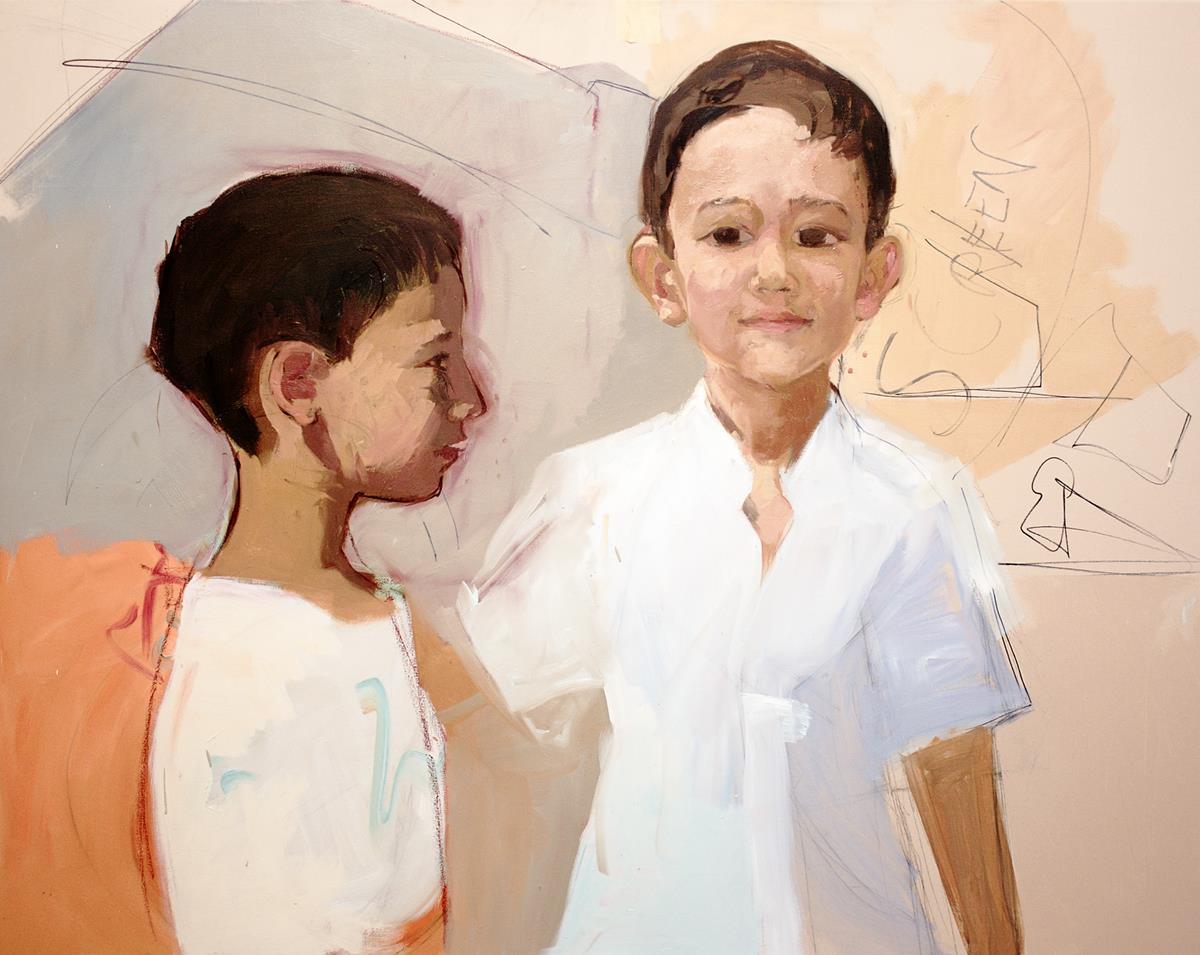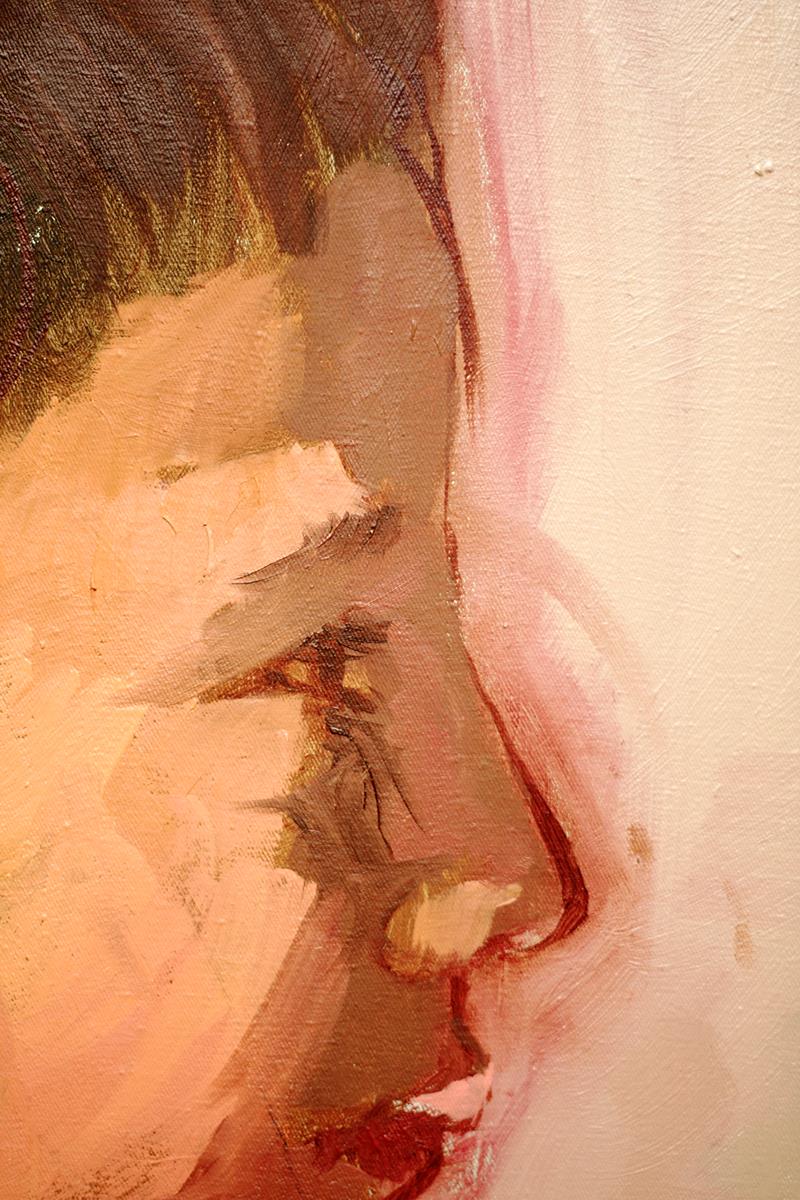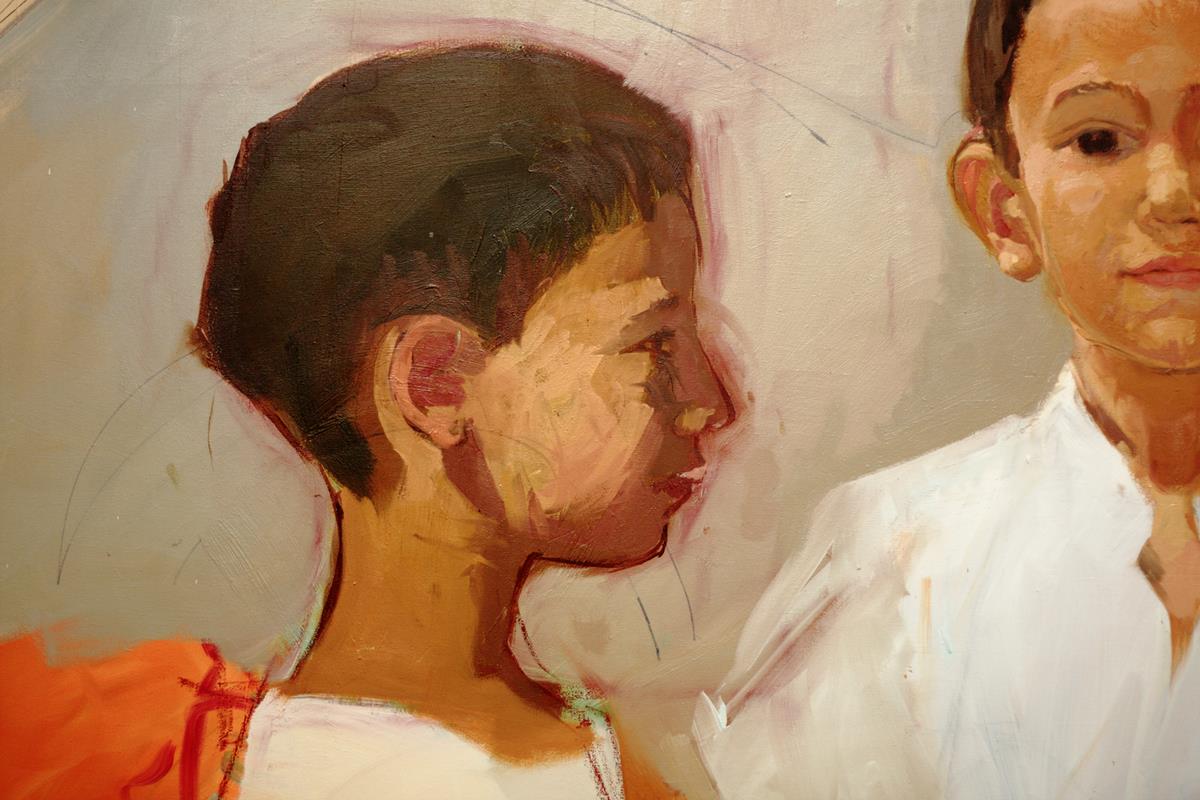- Oil over canvas and ink
- 100x70 cm
- 2012
Why do we photograph paintings as dead things, or even worst, as dead insects?
Why do we suddenly became dissecting scientist when we photograph works of art?
In placing the camera trying to catch frontally the full frame of the canvas we are ridiculously trying to transfer, the image of the painting to a digital or film surface. We tend to disregard this archiving activity as a kind of transparent operation. This is something that happens not only in documenting other kinds of more contemporary art expressions. Even traditional conceptual art used to disregard the photographic documentation of this theoretically inmaterial art, as something that wouldn't be affected by the fetishistic of the object, with obvious catastrophic effects for his own goals, but with fortunate effects for art history and the art market.
But this operation that implies the relationship that a work of art creates with its archive and with luck on art history is as Boris Groys would say a political action. The effect of power asserting which is reality and what is history
On the other hand we can see today from films to interventions and art installations the art of documenting as a creative activity. Classics like Ilya and Emilia Kavakoff or cinema directors as Peter Greenaway has transformed the archival and documenting activity as a work in itself. A way to express the infinite possibilities of interpretation. As Boris Groys would put it in "art power" this is a mere illusion. "Interventions that want to be political, in the sense of transcending the borders of the art system- while at the same timeremaining withing these borders". As he says contemporary art has become paradox-objects in front of which there is not an endless interpretation but in fact only one possible. A perfectly paradoxical self-contradictory reaction.



